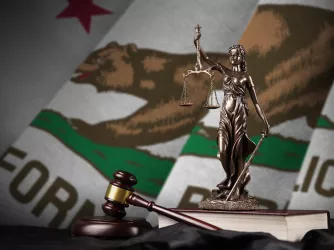Table of Contents
February 2009: Southern Illinois University at Carbondale
FIRE announces its Speech Code of the Month for February 2009: Southern Illinois University at Carbondale (SIUC).
Followers of FIRE's work are likely familiar with the ongoing controversy at SIUC. FIRE, along with the heads of the Illinois Association of Scholars and the ACLU of Southern Illinois, recently wrote to SIUC Chancellor Sam Goldman regarding the university's free speech zone policy. In response to FIRE's letter, Chancellor Goldman lashed out, erroneously alleging (among other things) that FIRE had given SIUC its "red light" rating because of its proposed sexual harassment policy rather than for its many existing policies that violate the First Amendment.
One of those policies is the SIU Board of Trustees' Policy on Non-Discrimination and Non-Harassment, which provides that
Discriminatory harassment includes, but is not limited to, conduct (oral, written, graphics or physical) directed against any person or group of persons because of race, color, national origin, religion, sex, sexual orientation, age, disability, or veteran's status that has the purpose of or reasonably foreseeable effect of creating an offensive, demeaning, intimidating or hostile environment for that person or group of persons. Such conduct includes but is not limited to objectionable epithets demeaning depictions or treatment and threatened or actual abuse or harm. (Emphasis added.)
There are numerous First Amendment problems with this policy, the most serious of which is the unconstitutionally vague and overbroad prohibition on "objectionable epithets" and "demeaning depictions." This is a common flaw in university harassment policies: a policy contains a definition of harassment (sometimes acceptable, sometimes—as here—itself problematic) but then provides examples of harassment that explicitly include constitutionally protected expression. Here, for example, most "demeaning depictions" are protected by the First Amendment; in fact, most parodies rely on demeaning depictions of their targets. And the Supreme Court has ruled that even the most wicked and biting satire or parody is constitutionally protected. In Hustler Magazine, Inc. v. Falwell, 485 U.S. 46 (1988), the Court held that the First Amendment protected a cartoon suggesting that the Reverend Jerry Falwell lost his virginity in a drunken encounter with his mother in an outhouse—a "demeaning depiction" if there has ever been one. What's more, "objectionable epithets," in and of themselves, are also protected speech—the First Amendment protects the right to be nasty and even terribly offensive.
This policy's definition of harassment is problematic in that it contains no requirement of severity or pervasiveness. It also is problematic because it makes no reference to a reasonable person standard. Rather, it only requires that the conduct create a subjectively "offensive" or "demeaning" environment for the listener, which leaves SIUC students and faculty members at the mercy of the most sensitive members of the community.
For these reasons, SIUC's Policy on Non-Discrimination and Non-Harassment is our February 2009 Speech Code of the Month. If you believe that your college or university should be a Speech Code of the Month, please e-mail speechcodes@thefire.org with a link to the policy and a brief description of why you think attention should be drawn to this code. And if you would like to help fight abuses at universities nationwide, add FIRE's Speech Code of the Month Widget to your blog, website, or Facebook profile and help shed some much-needed sunlight on these repressive policies.
Recent Articles
FIRE’s award-winning Newsdesk covers the free speech news you need to stay informed.

O holy fight: New Hampshire Satanic Temple statue threatened by more than vandals

California and other states are rushing to regulate AI. This is what they’re missing

One day after FIRE lawsuit, Congress passes changes to filming permits in national parks
